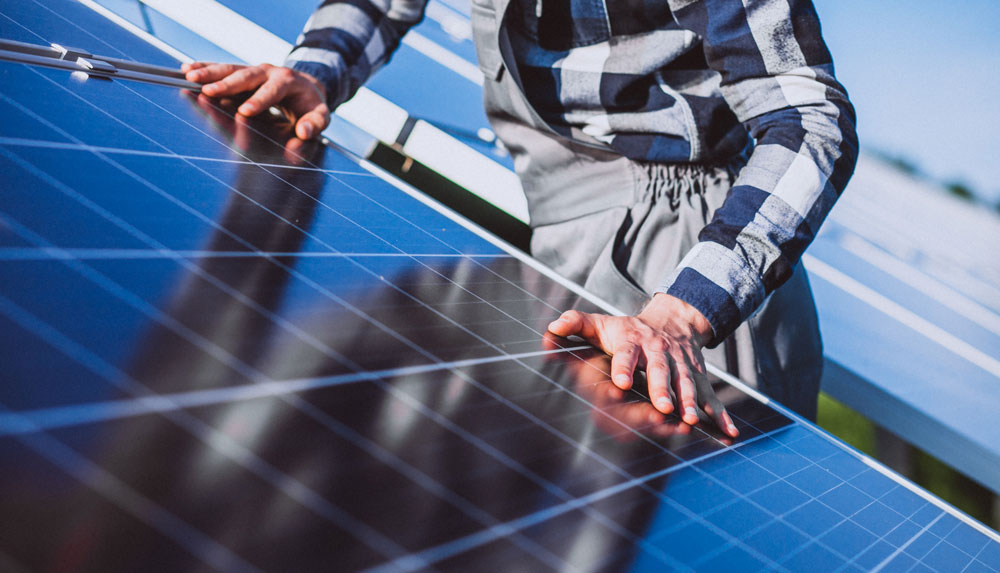Today, we are going to shed some light on an innovative technology that is transforming the way we harness energy – photovoltaic cells. Have you ever wondered how sunlight can be converted into electricity? Well, in this article, we will take a deep dive into what photovoltaic cells are and how they work. Get ready to explore the world of renewable energy and discover the incredible potential of these solar-powered wonders.

Definition of a Photovoltaic Cell
Photovoltaic cells, also known as solar cells, are devices that directly convert sunlight into electricity. They are the heart and soul of solar panels, which have become increasingly popular in recent years due to their incredible potential for generating clean and sustainable energy.
At its core, a photovoltaic cell is made up of semiconductor materials such as silicon. These materials have special properties that allow them to absorb photons from the sun’s rays. When photons strike the surface of the cell, they transfer their energy to electrons within the material, causing them to break free from their atoms.
Once freed, these energized electrons create a flow of electric current through an external circuit connected to the solar cell. This current can then be harnessed and used to power various electrical devices or stored in batteries for later use.
The beauty of photovoltaic cells lies in their ability to generate electricity without producing any harmful emissions or depleting finite resources like fossil fuels. By harnessing the power of sunlight – an abundant resource available almost everywhere – we can reduce our reliance on traditional non-renewable sources while mitigating environmental impacts associated with conventional energy production.
So next time you see a solar panel gleaming under the sun’s rays, remember that it contains photovoltaic cells working silently but tirelessly behind the scenes – transforming sunlight into usable electrical energy with remarkable efficiency!
How a Photovoltaic Cell Works
The basic working principle of a photovoltaic cell involves three main components: semiconductor materials, electric fields, and photons from sunlight. When photons hit the surface of the cell, they transfer their energy to the semiconductor material.
This energy excites electrons in the atoms of the material, causing them to break free from their atoms and create an electrical current. The electric fields within the cell then guide these freed electrons towards one direction where they can be collected as usable electricity.
Photovoltaic cells are made up of layers of different materials such as silicon or other semiconductors with specific properties that allow them to efficiently convert sunlight into electricity. These layers work together by creating an electric field that separates positive and negative charges and facilitates electron movement.
The efficiency of a photovoltaic cell depends on various factors like its design, quality of materials used, temperature conditions, and intensity of sunlight. With advancements in technology over time, scientists have been able to improve both efficiency and affordability making it more accessible for widespread use.
Advantages of Using Photovoltaic Cells
1. Clean and Renewable Energy: One of the biggest advantages of using photovoltaic cells is that they produce clean and renewable energy. Unlike fossil fuels, which contribute to air pollution and climate change, solar power is a sustainable source of energy that doesn’t emit harmful greenhouse gases.
2. Cost Savings: Installing photovoltaic cells can save you money on your electricity bills in the long run. Once you have recovered the initial installation costs, your electricity generation becomes essentially free. Additionally, if you generate more electricity than you consume, you may even be able to sell excess power back to the grid.
3. Low Maintenance: Photovoltaic cells require very little maintenance compared to other forms of power generation. With no moving parts and minimal wear and tear, regular cleaning and occasional inspections are usually all that’s needed to keep them running efficiently.
4. Versatility: Photovoltaic cells can be installed almost anywhere with access to sunlight – rooftops, open fields, or even integrated into building materials such as windows or facades. This versatility makes solar panels suitable for various applications ranging from residential homes to large-scale power plants.
305 In addition to reducing carbon emissions, photovoltaic cells also help conserve water resources since they don’t require any water for operation like traditional thermal power plants do.
There are numerous advantages associated with using photovoltaic cells – from environmental benefits and cost savings to their versatility and low maintenance requirements
Contact Solar Dynamics to Go Solar Today
Photovoltaic cells are a remarkable technology that harnesses the power of sunlight to generate electricity. These cells, also known as solar cells, convert sunlight directly into usable electrical energy through the photovoltaic effect. They have become increasingly popular in recent years due to their numerous advantages, including savings on your energy bills.
With the growing demand for alternative energy sources, it has become essential to have a strong understanding of the fundamentals of PV cells. Essentially, what is a photovoltaic solar cell and how does it function? Familiarizing yourself with these key concepts puts you in a better position to maximize the benefits of your solar investment. As technology advances and more people embrace solar solutions, solar PV cells are leading us towards a greener and more resilient energy landscape.
If you’re ready to tap into the power of the sun, reach out to Solar Dynamics at (305) 929-3150 or fill out our inquiry form for a complimentary consultation and quote. Our team of experienced energy consultants will be happy to assist you.

